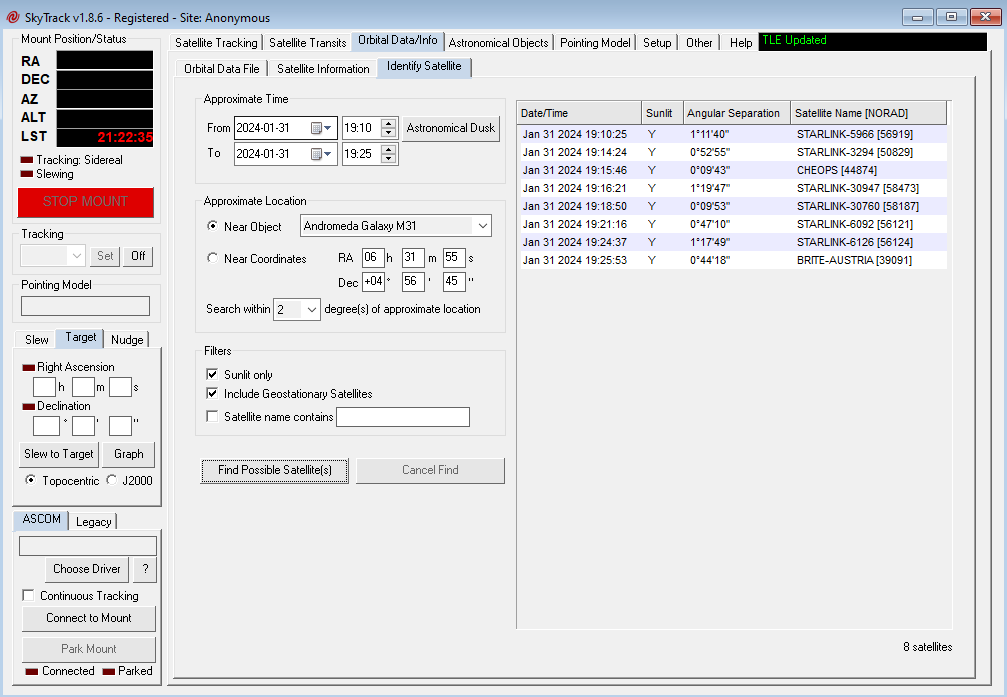Ok. Here it is with the correct date: 2024-01-31.
Very interesting thread! Transients are exciting, nice to learn how to verify possible identities. With this being so close to sunset, satellite flare seems very likely.
I’m definitely going to keep an eye out for info about the new Starlinks, that would be very curious if they’re capable of throwing up just a single point source of light in a 5min exposure without leaving any other visible streak. If it’s not Starlink, it could be something else, and it could be rotating-- but even that isn’t consistent. If it was rotating slowly enough to only expose the reflective surface once in 5 minutes, it should have been more of a streak. Or if it was rotating faster, to produce the point source, then there should have been a series of point sources along its orbit in the 5min exposure.
Russ, looks like the location got switched to “Near Object” M31 on your last couple of SkyTrack searches.
[Enjoying the thread.] Thanks for sharing.
If it were anything moving, it would be a streak and possibly have pointy ends like a javelin (that is what meteors look like). Did you say you are using an asi294? If so, that is a really noisy camera. Full well, overexposed pixels can look like a bright star, hot pixels can look like a star etc. Even with my 2600mm pro, I get these occasionally.
Was the “object” in any of the sub-frames between the two you showed us? If not, then it’s just a cosmic ray, hot pixel, noise, etc. most likely. Also, don’t forget the 294 isn’t a bsi sensor, it has electronics in front of the sensor, so more random things can light up.
Long story short, I would need to see all your sub-frames, I’d then animate them to be able to know what it is for sure. You can use ZWO ASIFitsView to animate the subs. ![]()

